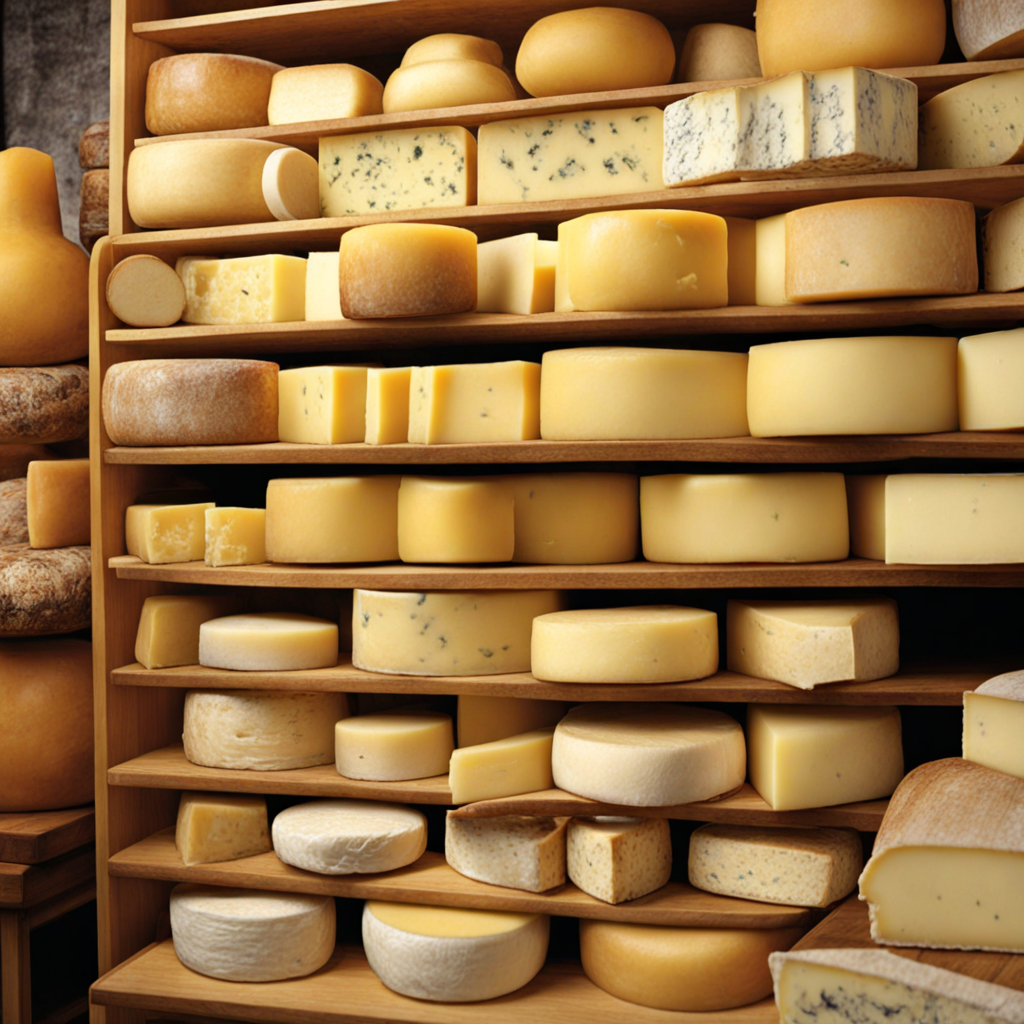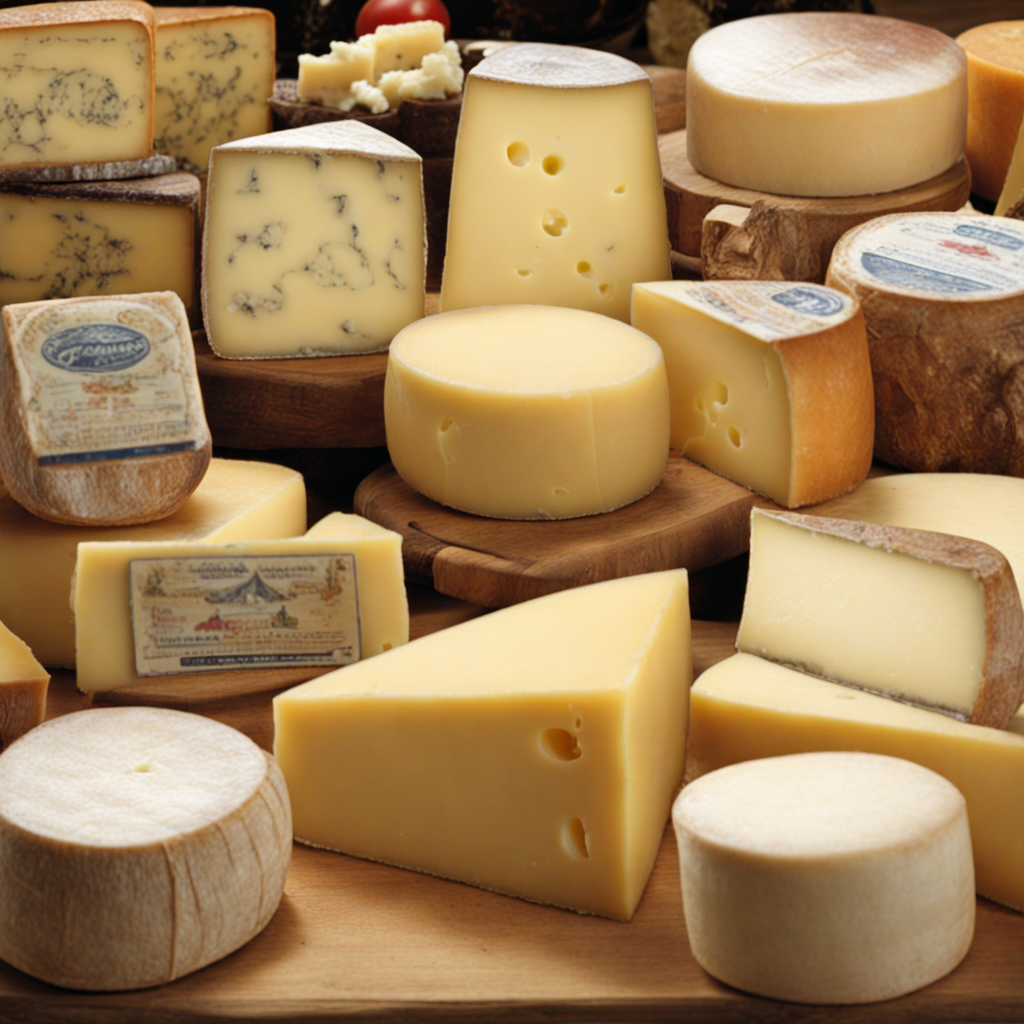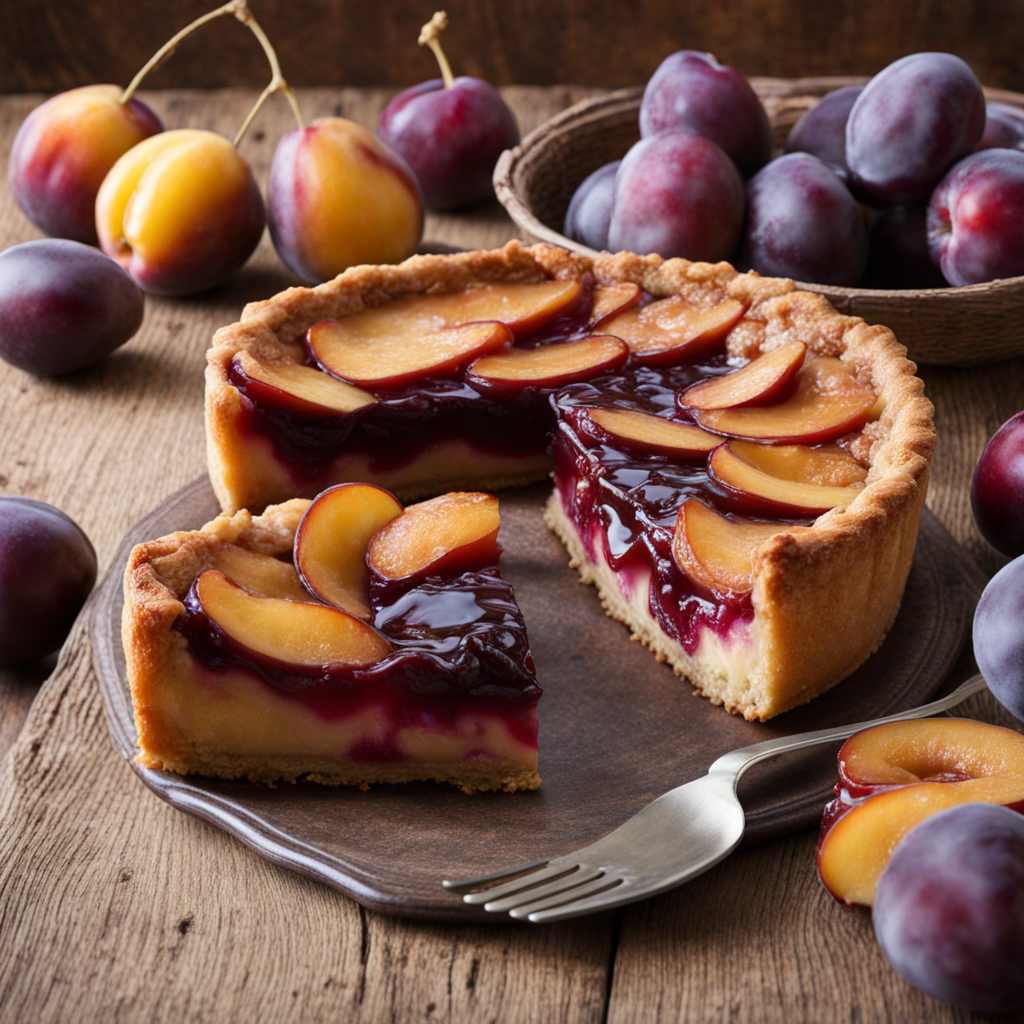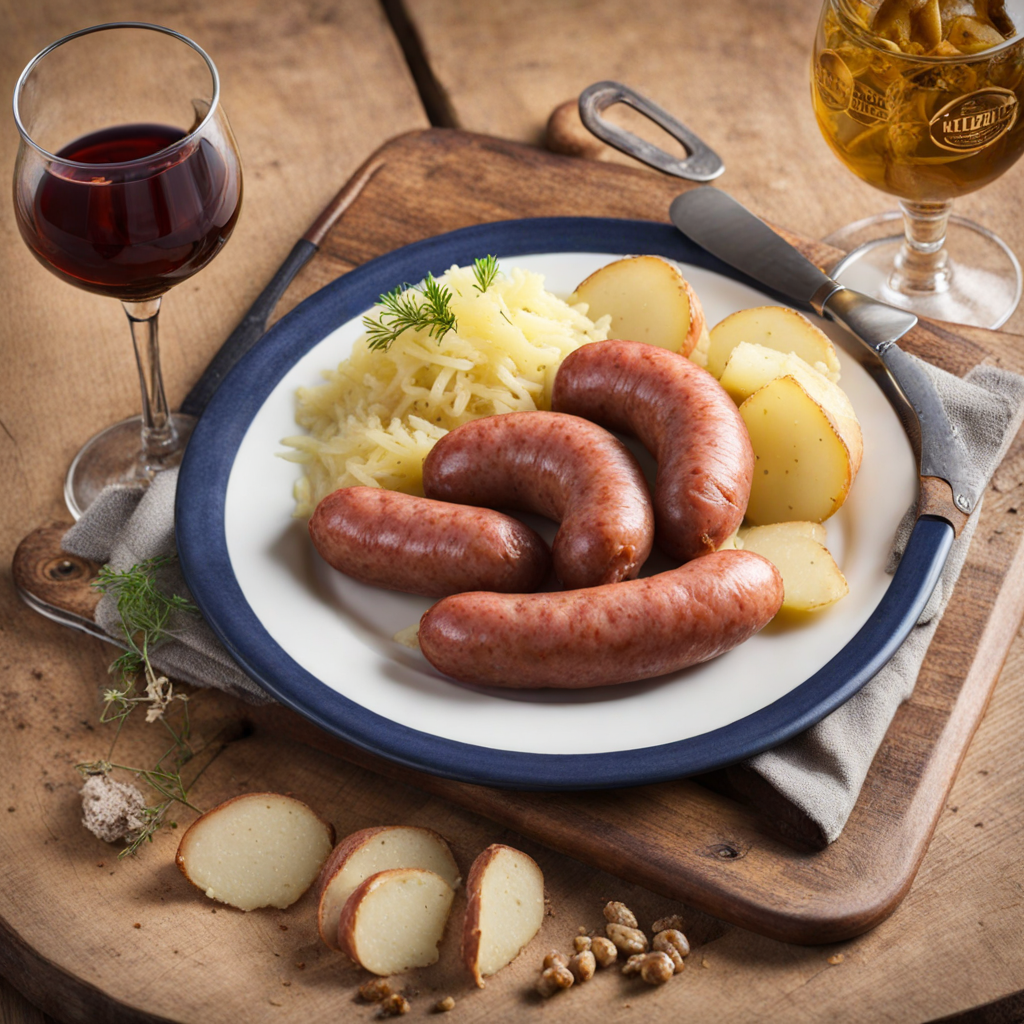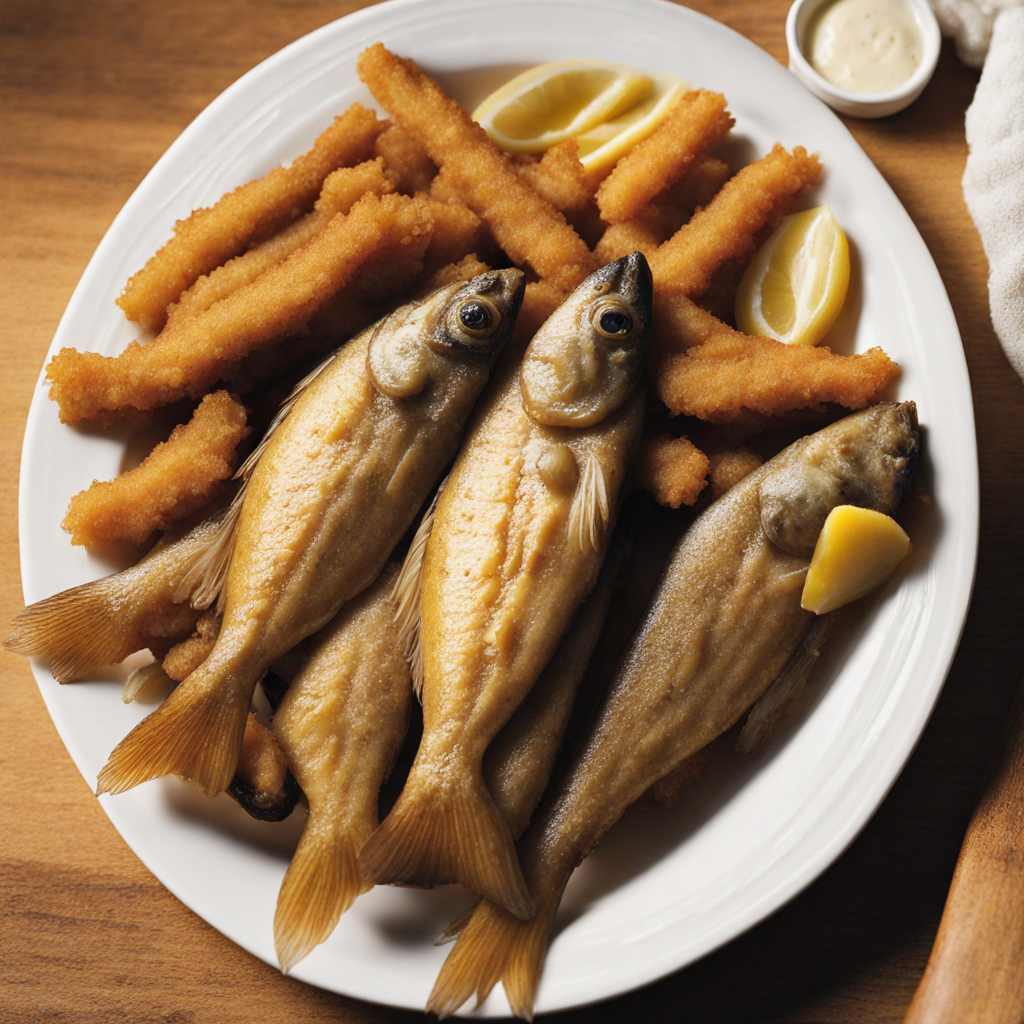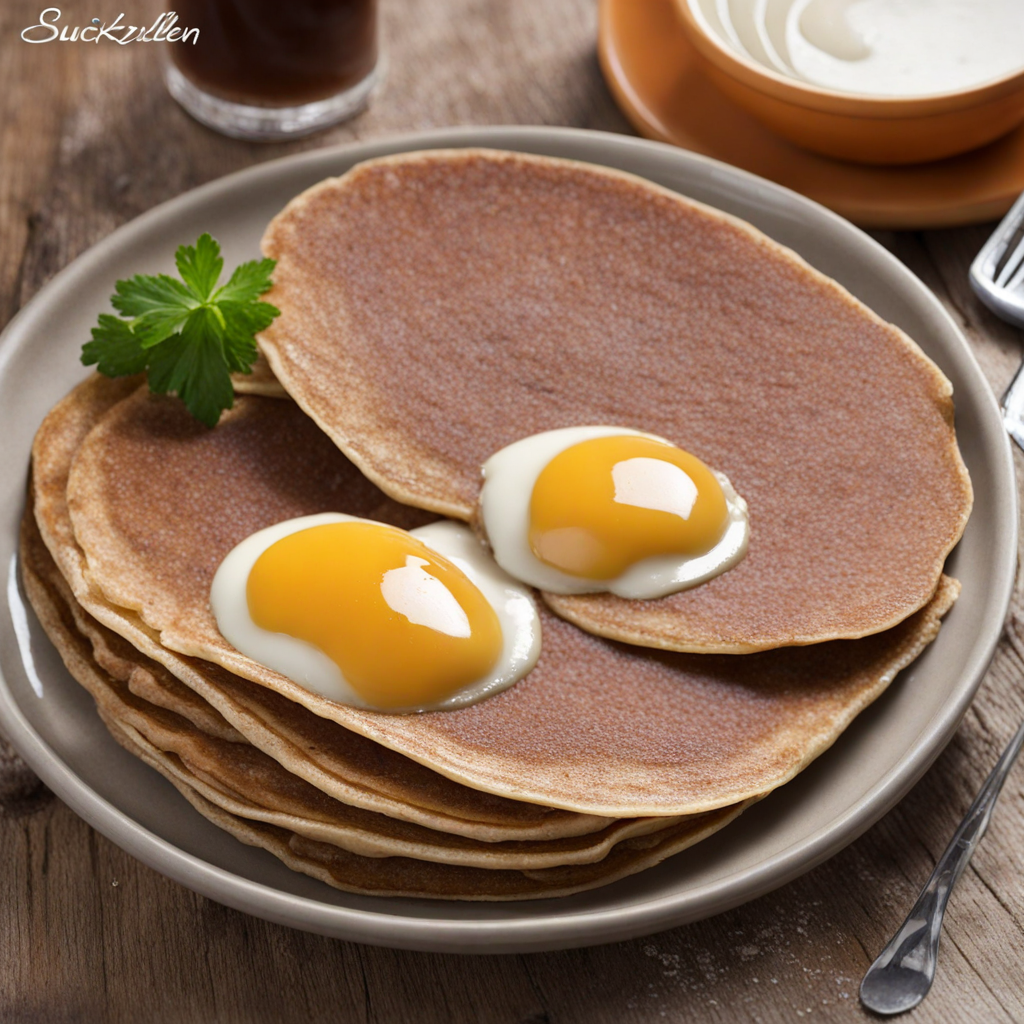Luxembourgish cheese
Luxembourgish cheese is a delightful representation of the small European nation's rich dairy heritage. Predominantly crafted from cow's milk, this cheese boasts a creamy texture that melts beautifully in your mouth. Its flavor profile is mild yet complex, often enhanced by the use of local herbs and spices during the aging process. The cheese ranges from soft, spreadable varieties to firmer types that can be sliced, making it versatile for various culinary applications. Pair it with crusty breads or fresh fruits, and you have a perfect combination that celebrates the essence of Luxembourg's pastoral landscapes. One of the notable varieties of Luxembourgish cheese is "Kachkéis," a fresh cheese that is slightly tangy and often enjoyed as a spread on bread. This cheese is traditionally made in small dairies and is a staple in local households, often served at breakfast or as a light snack. Another well-loved type is "Gromperekichelcher," which incorporates cheese into potato fritters, showcasing how cheese is integrated into Luxembourgish cuisine beyond just standalone enjoyment. The combination of flavors makes every bite a true testament to the craftsmanship behind these artisanal cheeses. Exploring Luxembourgish cheese also means discovering its role in the country's cultural heritage. Cheese-making in Luxembourg is often a family tradition, passed down through generations, and each producer has their unique touch. Enjoying Luxembourgish cheese is not just a culinary experience; it’s a journey into the heart of Luxembourg’s rural traditions, making it a perfect choice for any food lover looking to expand their palate with new and exciting flavors.
How It Became This Dish
Fromage Luxembourgeois: A Culinary Treasure of Luxembourg #### Origins Fromage luxembourgeois, or Luxembourg cheese, is not just a product of the land; it is a reflection of the rich tapestry of cultural influences that have shaped Luxembourg over centuries. Nestled between Belgium, France, and Germany, Luxembourg has long been a crossroads of different peoples and traditions, and its cheese-making practices are no exception. The origins of Luxembourg's cheese date back to the Middle Ages, when local farmers began to produce cheese as a means of preserving surplus milk from their livestock. Historically, the region's pastoral landscape provided ideal conditions for dairy farming, with lush pastures and a temperate climate. The earliest cheeses were simple, made from cow's milk, and produced using traditional methods passed down through generations. The introduction of various cheese-making techniques from neighboring countries, particularly the French and the Germans, began to influence local practices, leading to the development of a unique style of cheese that is distinctly Luxembourgish. #### Cultural Significance Fromage luxembourgeois holds a special place in the hearts of the Luxembourgish people. It is not merely a food item; it is a symbol of national identity and pride. In a country where traditions are cherished and preserved, cheese-making has become an integral part of the culinary culture. Local cheese producers often participate in community events and markets, showcasing their artisanal products and sharing stories of their craft. The cheese is also a staple in traditional Luxembourgish cuisine. It is commonly featured in dishes such as "Gromperekichelcher" (potato fritters) and served alongside locally produced bread or enjoyed with a glass of crémant, Luxembourg's sparkling wine. During festive occasions and family gatherings, fromage luxembourgeois is not only eaten but celebrated, reinforcing its role as a communal food that brings people together. #### Development Over Time As Luxembourg entered the modern era, fromage luxembourgeois began to evolve, adapting to new tastes and trends while retaining its historical roots. The 19th century saw significant changes with the advent of industrialization. While traditional cheese-making methods persisted, new technologies and machinery began to emerge, allowing for greater production efficiency. This shift marked the beginning of commercial cheese-making in Luxembourg, with several dairies establishing themselves to meet the growing demand. By the mid-20th century, the cheese industry in Luxembourg faced challenges, including competition from imported cheeses and changing consumer preferences. In response, local producers began to innovate, experimenting with different flavors, textures, and aging processes. The introduction of new varieties, such as creamy, soft cheeses and aged, hard cheeses, helped to diversify the product range and appeal to a broader audience. In 1992, the European Union recognized the importance of traditional foods, leading to the establishment of Protected Designation of Origin (PDO) status for certain cheeses. While fromage luxembourgeois has not yet achieved this designation, the movement toward recognizing and protecting local culinary heritage has spurred efforts to promote and preserve traditional cheese-making practices in Luxembourg. Today, fromage luxembourgeois is characterized by its variety and quality, with several notable types emerging, each with its unique taste and texture. The most famous among them is "Kachkéis," a creamy, spreadable cheese that is often flavored with herbs or spices. Another popular variety is "Gromperekichelcher," a cheese-infused potato fritter, which has become a beloved street food. Other artisanal cheeses made from cow, goat, and sheep milk are also gaining popularity, showcasing the versatility of local ingredients. #### The Art of Cheese-Making The traditional cheese-making process in Luxembourg is a labor of love, often involving small-scale, artisanal producers who prioritize quality and sustainability over mass production. The journey from farm to table begins with the careful selection of milk from local farms, which is then transformed into cheese using time-honored techniques. Many producers adhere to strict standards of animal welfare and environmental sustainability, ensuring that their products reflect the values of the Luxembourgish community. Cheese-makers take great pride in their craft, often experimenting with local herbs, spices, and even beer or wine to infuse their cheeses with unique flavors. This commitment to creativity and quality has led to awards and recognition for various Luxembourgish cheeses in international competitions, placing them on the map as gourmet products. #### The Future of Fromage Luxembourgeois As globalization continues to influence food markets, the future of fromage luxembourgeois appears promising. The growing interest in artisanal and locally-sourced foods has sparked a renewed appreciation for traditional cheese-making practices. Culinary tourism in Luxembourg has also played a role in promoting local cheeses, with visitors eager to explore the country’s gastronomic offerings. Educational initiatives, such as workshops and tasting events, are helping to raise awareness about Luxembourg’s cheese heritage among younger generations. Many chefs are also incorporating local cheeses into their menus, further enhancing their visibility and encouraging people to embrace this culinary treasure. Moreover, the movement towards sustainability and organic farming is gaining traction among cheese producers, aligning with the values of health-conscious consumers. This not only helps preserve the environment but also ensures that fromage luxembourgeois maintains its high quality and unique character for future generations. #### Conclusion Fromage luxembourgeois is more than just a type of cheese; it is a reflection of Luxembourg's rich history, cultural identity, and ongoing evolution. With its deep-rooted traditions, artisanal craftsmanship, and a commitment to quality, it stands as a testament to the enduring legacy of Luxembourgish culinary heritage. As it continues to adapt and thrive in a changing world, fromage luxembourgeois remains a beloved staple that connects the past to the present, inviting all to savor its unique flavors and stories.
You may like
Discover local flavors from Luxembourg


